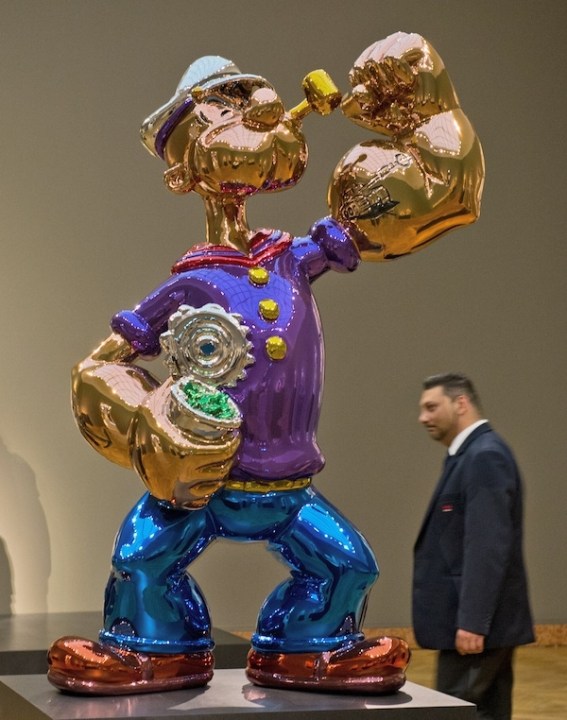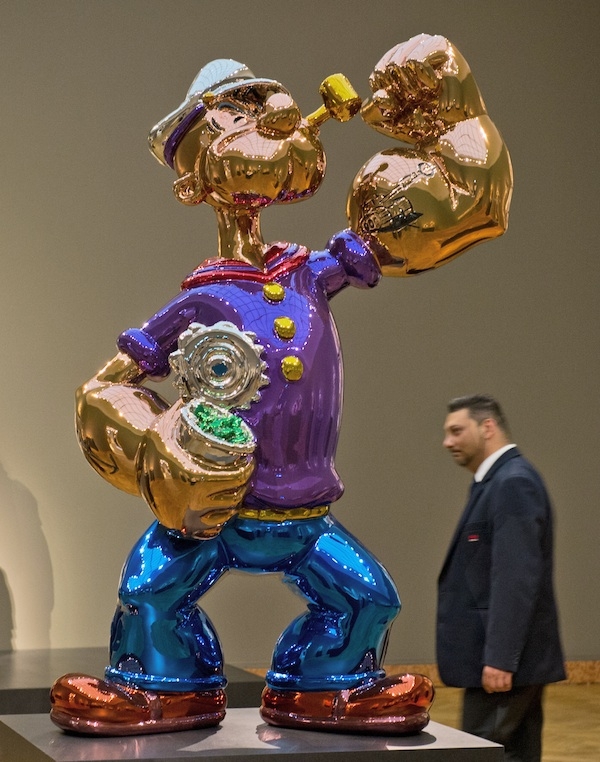When collectors want to purchase an expensive work of art, they contact their lawyers to write up a contract with the dealer, spelling out pages of contingencies and indemnity clauses. ‘We have a steady stream of business writing agreements for collectors and galleries,’ said Jo Backer Laird, a Manhattan arts lawyer and a former general counsel at Christie’s. ‘We didn’t see much of this just ten years ago.’
When someone believes he didn’t make enough money selling a work of art — Lord Edward Spencer-Churchill for the sale of his Basquiat painting last year through the London dealer Gerard Faggionato; Ronald Perelman for the 2011 sale of a Jeff Koons sculpture by New York’s Gagosian Gallery — he calls his lawyer to institute a lawsuit. When someone believes he paid too much for a work of art (the Korean collector Najung Seung sued Manhattan dealer Mary Dinaburg after spending $290,000 for a Julian Schnabel painting later valued at $110,000), he calls his lawyer and starts a lawsuit.
How much has the art world ‘lawyered up’? There are no data maintained on the number of lawyers who identify their practice in the art world, but John Cahill, a Manhattan art lawyer and current chairman of the New York City Bar Association’s art law committee, speculated that the number has tripled within the past decade, as have the number of lawsuits. At New York’s Hughes, Hubbard & Reed, for instance, the art law division began in the late 1990s with just one lawyer and now employs half a dozen; while the prominent Manhattan art lawyer Peter Stern has more than doubled his art trade billings (‘let’s just say millions of dollars’) over the past five years. In addition, more and more law schools around the country now offer art law courses and seminars (‘Students come to this school specifically to take my class,’ said John Henry Merryman, professor at Stanford University Law School, who teaches an annual art law course).
The increase in legal work in the art world reflects the growing amounts of money people are willing to spend on works of art. Rising prices have seen more art world lawsuits, more lengthy contracts for purchases and ‘more people looking to practise law in this field’, Cahill said. Cahill’s predecessor at the art law committee, Howard Spiegler, claimed that the prevalence of lawyers in the art trade signifies the degree to which ‘people think of art as they do any other investment’. He added that it is ‘sort of ironic that you would never buy a $500,000 apartment in New York without a title search, but you might buy a Picasso with nothing but a dealer telling you it’s a Picasso’.
As more and more people enter the art market, the traditional handshake that sealed the deal looks out of date, while the overall lack of industry regulation makes for nervousness. The increasing complexity of many transactions (especially when there are questions of authenticity, condition, provenance, export and national patrimony laws, as well as concerns over stolen art objects) and the globalisation of the market have added to the nerves. ‘Collectors don’t know who they’re buying from any more,’ said Merryman, ‘and they want to formalise the relationship.’ He noted that, in the high-priced realm of art collecting, adding lawyers to the process of consigning and purchasing artworks increases the cost and complexity of these transactions.
Increasingly, art dealers are accepting the presence of lawyers as part of the process. ‘High-spending collectors do sometimes ask for something more formal than an invoice,’ Ron Warren, director of the Mary Boone Gallery in New York, said. ‘Above $1 million, you kind of expect it now. These are business people who are used to contracts accompanying every sale they make. It is the same to them if they are buying or selling companies, or artwork.’ Another Manhattan dealer, Renato Danese, claimed that ‘there is not so much trust in a dealer’s word and reputation any more. People want it in writing, or there’s no deal.’
Sounds antagonistic, but sometimes the addition of legal counsel is for the best. Take the collector who was ready to buy a Jackson Pollock from New York’s Knoedler Gallery for ‘something north of $11 million’, said his New York lawyer Daniel Weiner. ‘I wrote up a contract and sent it to Ann Freedman’ — the director of the gallery at the time — ‘who screamed and yelled, “That’s not how we do things here. We have a reputation.” I told her that if she wanted my client this is what she’d have to accept, because we wanted representation and warranties that the work was authentic.’ Freedman refused, ‘And we took our $11 million and went elsewhere.’ Smart move.
A few years later, in late 2011, Knoedler Gallery closed its doors after 165 years in the face of a spate of lawsuits charging that since the mid-1990s it had sold 20 (and perhaps more) fake or misidentified paintings by artists such as Franz Kline, Barnett Newman, Jackson Pollock, Mark Rothko, Clyfford Still, Willem de Kooning and Robert Motherwell.
This trend of lawyerisation looks set to continue. ‘Being a lawyer is a wonderful way of getting involved in the art world when you are neither an artist nor an art historian,’ said Laird. Perhaps, if artists want more attention, they should get a law degree.







Comments